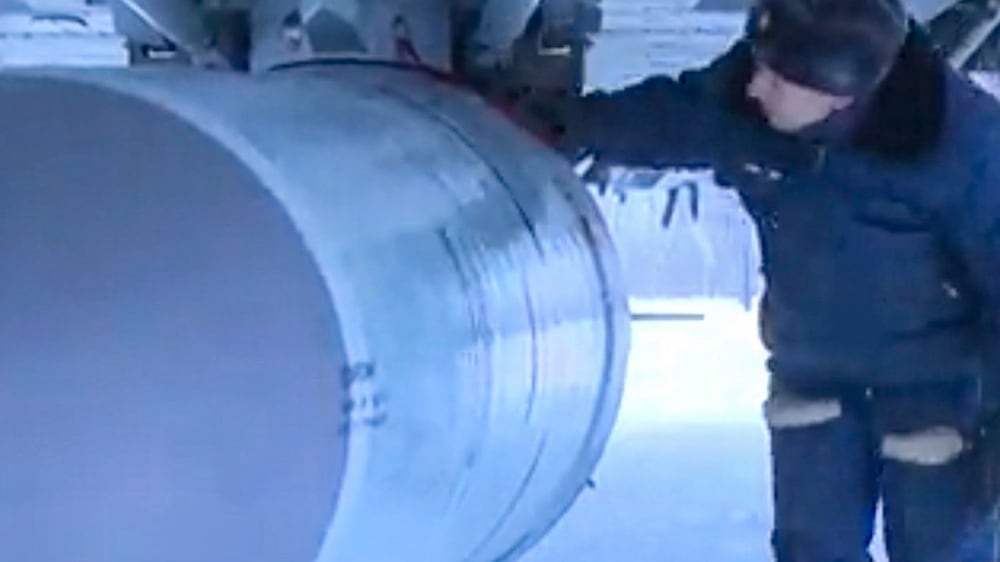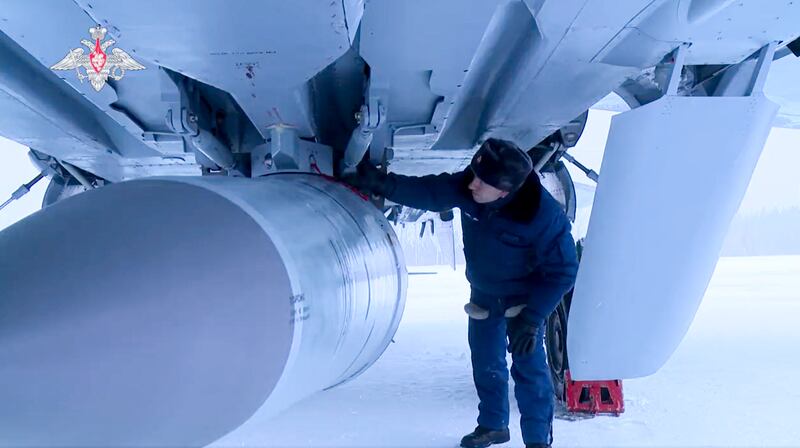Live updates: follow the latest news on Russia-Ukraine
The US, UK and Australia have joined forces to develop hypersonic and anti-hypersonic weapons.
As war in Ukraine rages, the three members of the Aukus military pact reiterated their “unwavering commitment” to an international system which “respects human rights”.
Russia has claimed its first use of hypersonic weapons in Ukraine.
Missiles that can fly at five times the speed of sound, (6,175 kilometres an hour) or more can outrun conventional missile defence systems.
UK Prime Minister Boris Johnson, US President Joe Biden, and Australian Prime Minister Scott Morrison issued a statement on Tuesday giving their reasons for the agreement.
Russian military video claims to show Kinzhal hypersonic missile being fired in Ukraine

“In light of Russia's unprovoked, unjustified, and unlawful invasion of Ukraine, we reiterated our unwavering commitment to an international system that respects human rights, the rule of law, and the peaceful resolution of disputes free from coercion,” their statement said.
“We also committed today to commence trilateral co-operation on hypersonics and counter-hypersonics, and electronic warfare capabilities, as well as to expand information sharing and to deepen co-operation on defence innovation.
“These initiatives will add to our efforts to deepen co-operation on cyber capabilities, artificial intelligence, quantum technologies, and additional undersea capabilities.
“As our work progresses on these, and other critical defence and security capabilities, we will seek opportunities to engage allies and close partners.”
Russia claimed its first use of the hypersonic Kinzhal, or Dagger, projectile, a weapon it said has a range of more than 2,000 kilometres.
The Kinzhal, which is launched from an aircraft, destroyed an arsenal at Delyatin in western Ukraine.
Kinzhal missiles can carry conventional or nuclear warheads and reach speeds of more than 3.2 kilometres a second, or 11,500 kph, Russian President Vladimir Putin said in 2018's state-of-the-nation address.
At that speed, the kinetic energy of the weapon could be enough to destroy a range of targets, even without a warhead.
The Aukus pact was signed last year and involved a deal for Australian nuclear submarines. This cut France out of an agreement to sell diesel vessels to the Australian navy.
The Aukus leaders said they were “pleased with the progress” Australia was making in the development of nuclear-powered submarines.



































